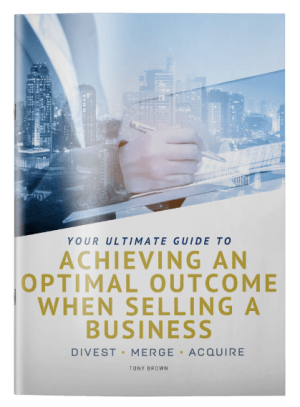When selling a business, marketing the opportunity with a price attached provides potential investors with important information relating to the size and profile of the business. However, formalising price expectations also serves to set the ‘high bar’ from which interested acquirers will naturally seek to negotiate downwards, all but eliminating the potential upside of any special value strategic buyers will place on the opportunity.
Most SME’s are marketed for sale at a specific price.
The key benefit of setting a price is to simplify the initial qualifying process by establishing a clear profile of the business and expectations from the outset.
This allows prospective buyers to better qualify an opportunity at an earlier stage. By providing the market with this information, interested parties know the rough size and value of the business so they can quickly determine whether it is likely to be of a suitable size.
Buyers without the capacity to fund the acquisition are less likely to enquire as they have a benchmark understanding of pricing expectations;
Setting a target price is most effective where the price is supported by historical performance. As long as the multiple applied is consistent with market expectations, taking into account any factors unique to the particular business, reasonable buyers should arrive at a valuation in or near the target range. If a vendor’s expectations are reasonable in relation to historic results and the growth profile of the business is consistent or steady, nominating an asking price can promote a quick and efficient process.
On the downside, as in any negotiation, nominating a specific asking price usually invites buyers to adopt this as the upper end of a range, establishing the expectation that vendors are negotiable down from that figure.
Consequently, most businesses are marketed at the top end of an indicative valuation range, with the degree to which the vendor is negotiable remaining unstated.
When to invite Expressions of Interest
There are circumstances when it may be more advantageous to market a business without setting a specific price, by inviting EOI (Expressions of Interest).
In general, marketing under EOI is recommended in situations when the price expectation cannot be supported purely by historical trading results. This may occur when:
- there is a significant component of IP (Intellectual Property) in the pricing expectation and the seller is hunting for blue sky;
- the forecasts are significantly higher than historical results, and the maintainable earnings cannot easily be determined;
- a business is of additional strategic benefit to an individual or group of buyers;
- the market has the potential to drive the price above expectations.
Under these scenarios, it can be very difficult to determine a marketable price expectation as the basis for valuation is no longer simply the businesses historical performance. Compounding this, as the total enterprise value placed on the business may differ significantly between buyers, setting the price could unnecessarily ‘cap’ the ultimate sale price.
Buyers from the same industry are more likely to value the business more highly as a bolt-on, versus an investor who is primarily focussed on price and who values the business on a standalone basis with little or no expected leverage.
Buyers can and should work out their own offer range according to the value of the business to them. If their valuation is significantly below an established asking price, they may not proceed further, as they may assume the vendor’s pricing expectations are unreasonable.
Disadvantages of adopting EOI include:
- Buyers have no idea about the size of the business and the price expectation until further information is provided.
- The process is less efficient, as an extra step or two needs to be taken with each buyer.
- EOI may deter buyers who are unsure of the vendor’s price expectations. An opportunity with no pricing expectation may fall into the ‘too hard basket’ and miss out on enquiries from target buyers. Experienced buyers may have been burned in the past investing time and money into a process only to find the seller’s expectations to be unrealistic. Accordingly, they may perceive a process with no stated pricing expectation as too difficult.
When marketing under EOI, it is highly recommended that buyers are provided with high-level price guidance, usually in the form of in interim response note indicating a price ‘upwards of’. This effectively sets a floor price without nominating a ceiling.
Some M&A advisors believe an EOI process needs to be accompanied by an ‘offers by’ date. However, it is worth considering that setting a deadline may result in having to make embarrassing extensions that draw attention to a situation where acceptable offers have not been received within the timeframe. It also tends to delay the best organised buyers and push them into a slower timeframe. As a result, a set timeframe for offers is often not the best option – unless there is an unusually tight time requirement placed on the process by the vendor.
Divest Merge Acquire’s approach is to work to the highest common denominator, rather than the lowest. Accordingly, we adopt the same approach to timing regardless of whether a specific price or EOI is chosen: We prefer to leave the process open ended. Then, when an offer is received, we inform all other interested parties that an offer has been received and that it is being seriously considered by the vendor. We encourage them to move more quickly if they intend proceeding further, so their offer can be considered simultaneously.

